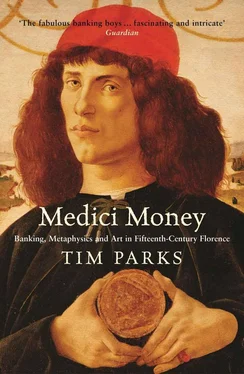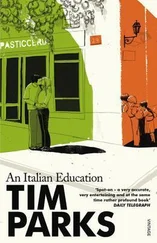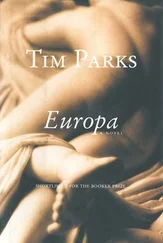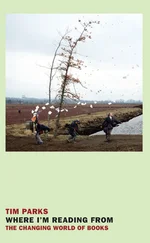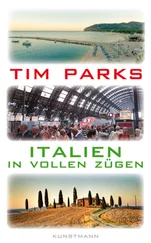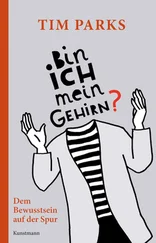Stendhal, in his Histoire de la Peinture en Italie , suggests that it was only through the drug of aesthetic passion and pleasure that the Medici were able to subdue the Florentines’ “passionate love for liberty and implacable hatred of nobility.” They accepted the Medici, that is, because the family filled the city with beautiful things. There may be something in this, but not if we are to limit aesthetics and beauty to canonical works of art. Pictures, sculptures, palazzi would never have been enough. Lorenzo had gone into the lion’s den. It was a marvelous gesture. Over three long months, he had talked the enemy around. He had seduced King Ferrante. And the drama of it, the magnificence of the adventure, had seduced the Florentines. From now on, they knew that they were governed by a man with balls and charisma. And enormous luck. For in August 1480, the Turkish army landed on the Italian peninsula and seized Otranto on the southeast coast. Twelve thousand people were killed and ten thousand taken into slavery. How all the other wars mentioned in this book pale into insignificance beside these figures. But it was excellent news for Lorenzo. In return for his contribution to the collective effort to repel the Infidel, he could demand the return of territories conceded in his treaty with King Ferrante, as well as complete absolution from the now-nervous Pope Sixtus IV.
So, quite scandalously, everything at last returned to normal, as if the Pazzi conspiracy had never been. In 1478, immediately after the assassination attempt, the Florentine signoria had written to Sixtus describing him as “Judas in the seat of Peter.” In response, Lorenzo had been condemned as a “heretic,” which meant a death sentence. And now, just three years later, all was forgiven and forgotten. In December 1481, Giovanni Tornabuoni was down in Rome again, negotiating recognition of the papal debt to the Medici bank, reassuring old clients, resuming business. Yet something had changed. In letters back to his nephew, Lorenzo, Tornabuoni for the first time switches from the familiar tu to the formal voi , as if addressing a superior. As head of the bank, Lorenzo had always been addressed as la Magnificenza vostra . The same was true of his father, and of Cosimo too in his old age. It was ordinary etiquette. But now, after the feat of Naples, after taking the city’s destiny in his own hands and delivering it from its enemies, Lorenzo is suddenly Il Magnifico . Out on his own. Everyday politeness is elevated into individual glory. A stiff old uncle bends his knee. At which point, Lorenzo’s need for the bank has really ceased to exist. It’s unthinkable that Il Magnifico might lose power merely for a lack of cash.
BIOGRAPHIES OF LORENZO tend toward hagiography. They concentrate on this period between 1480 and 1492 and describe it as a golden age. Didn’t Machiavelli, in the gloom of sixteenth-century foreign dominance, describe it as such? Lorenzo manipulates the available art patronage, private and public, sending great painters hither and thither to those who want the best. He doesn’t commission much himself because money is short and he has, as we shall see, other uses for it. When he does spend, it’s not on the kind of public and religious projects that Cosimo patronized. Lorenzo’s purchases are private. He likes to possess things. On the other hand, he has clearly grasped the idea of using art and even poetry to enhance the reputation of the state and the legitimacy of his reign. The Florentine government would preside over and promote the production of beauty. Such a policy is widely believed to be a good thing. Fortunately, there was a remarkable supply of first-class artists: Ghirlandaio, Verrocchio, Pollaiuolo, Botticelli, Leonardo. Fortunately, there were excellent writers — Poliziano, Landino, Lorenzo himself — capable of transforming Tuscan into the language of Italy, a coup beyond any military victory.
And he is praised for his diplomacy. He became “almost the balance of all Italy,” said Guicciardini, meaning that Lorenzo preserved the balance of power. Later biographers take up the expression without the almost . Lorenzo opposed Venice in its expansionist assault on Ferrara in the early 1480s; he opposed Pope Innocent VIII’s expansionist assault on Naples in the mid-eighties; but he moved more carefully now, choosing to alienate no one over the long run, offering favors to everybody. As the weakest of the five Italian powers, Lorenzo had an obvious interest in maintaining the status quo. Unable to shine militarily, his city must stand out for its artistic achievements. What was expedient then is understood as virtuous now.
Or the biographies are written in indignant opposition to the hagiographies, in much the same way that many citizens of Florence hated Lorenzo more intensely the more the world praised him. On his return from Naples, almost the first thing Lorenzo undertook was another and final reform of the state. A new constitutional body of only seventy chosen Medici supporters was given huge powers. Every vote against Lorenzo was always a personal affront. Every picture commissioned took into account the political loyalties of the painter, the propaganda value of the image. Speaking of the need for peace, Lorenzo missed no opportunity to expand Florence’s borders. In 1484, on the slightest of pretexts, the garrison town of Pietrasanta was seized from the Genoese. Writing convincingly of the need for free choice in marriage, he imposed brides on reluctant spouses. He betrothed his fourteen-year-old daughter Maddalena to the illegitimate, debauched, and drunken son of Pope Sixtus’s successor, Innocent VIII. The rhetoric of fiscal equality ever on his lips, he introduced a new coin, the quattrino bianco , in which all customs duties must be paid. The silver picciolo had long been losing value. The new money effectively increased those taxes paid by the poor by 25 percent. It did not alter their incomes.
Complaining of the heavy responsibilities of power, he exercised it ever more determinedly, “holding the city completely in his will as if he were a prince waving a baton,” says Guicciardini. Rushing out of the Palazzo della Signoria one January morning in 1489, four days after his fortieth birthday, Lorenzo waves his nowgouty arm to silence the crowd. They are demanding that a certain criminal should be spared execution. Hang him now , Lorenzo orders, here. The man had killed a police agent. The man is hanged. Four protesters are whipped and banished. Lorenzo has a considerable investment in the powers of the police. He goes nowhere now without an armed bodyguard of a dozen men, paid for by the state.
Lorenzo is a tyrant and the Pazzi conspirators were republican martyrs. Such was the burden of Alamanno Rinuccini’s Dialogue on Liberty , written, in the classical style, when its author retired to his country villa in 1479, during the war with Naples and the pope. With the state of Medici tyranny, he wrote, the only thing an honest man can do is to withdraw from public life. Rinuccini had a long record of holding high offices under the Medici, to whom he dedicated various translations from the Greek; but he had fallen out with Lorenzo and his life savings had been held in the Pazzi bank. Nevertheless, shortly after writing the dialogue, which he was wise enough not to publish, he went back to Florence and served the Medici regime in a variety of public offices for many years.
The ambiguity of the case is emblematic. Was the core of Rinuccini’s personality in his denunciation of the Medici? Or was there an element of sour grapes and rhetorical exercise? Was the man’s public service a sad charade that served to prop up a dangerous tyrant? Or was it honorable and a pleasure? “So many men on the councils denounce the Medici over dinnertime discussion at home in their villas,” wrote Marco Parenti, “then vote as they’re told when they are back in Florence.” It seemed a new sort of personality was in the making: that of the man who does not find it too much of a problem to be liberal and virtuous in private while toeing an authoritarian line in public. And perhaps this had come about in response to a new kind of society where public life would always involve a surrender of honesty, if only because the basis of power would always be suspect, always require a constant effort of propaganda to assert its legitimacy. In these murky circumstances, hardly unfamiliar to us today, to write hagiography or its opposite is to miss the point.
Читать дальше
